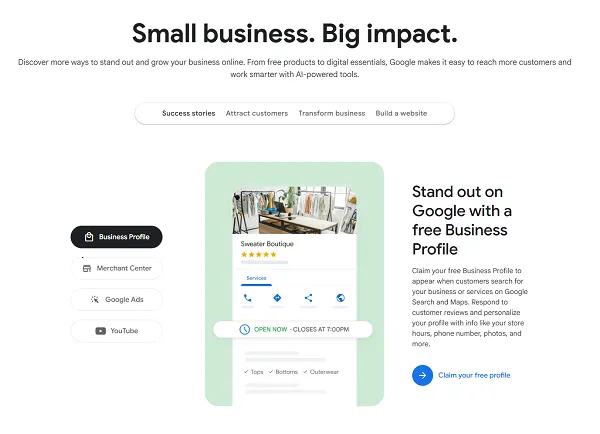As the landscape of artificial intelligence (AI) tools continues to evolve, small and medium-sized businesses (SMBs) are presented with both opportunities and challenges. Google’s newly launched Small Business Hub aims to facilitate this transition by providing resources, training, and tools designed specifically for SMBs navigating the AI shift. This initiative comes at a critical time when the integration of AI technologies can significantly enhance marketing strategies, data analysis, and operational efficiency.
AI platforms offer a suite of capabilities that can streamline operations and drive revenue growth. However, the decision to integrate these tools involves careful consideration of several factors, including strengths, weaknesses, costs, return on investment (ROI), and scalability. For instance, platforms such as Make and Zapier provide automation solutions to streamline workflows. Make is known for its user-friendly interface and robust integration capabilities with various applications. It allows for complex workflows through visual automation, making it suitable for businesses looking for a configurable solution without extensive technical expertise. Conversely, Zapier’s strength lies in its vast library of integrations, supporting thousands of apps and offering a straightforward setup. This makes it a valuable choice for those seeking quick and efficient automation. While both tools can save time and resources, the choice often hinges on the specific needs of the business and the complexity of the workflows involved.
The cost structure for these tools is another critical consideration. Automation platforms generally operate on a subscription model, where pricing scales with the level of usage and the number of integrations. For SMBs operating on limited budgets, understanding these cost implications is essential. Make may appeal to businesses that prioritize comprehensive automation processes but are willing to invest time in tailoring workflows. In contrast, Zapier’s pricing can become costly as businesses scale up their operations and require more zaps (the automated workflows created in Zapier). Thus, it is crucial for SMB leaders to meticulously analyze their specific operational needs and anticipated growth trajectory before committing to these platforms.
The ROI of implementing AI tools can be substantial, particularly when considering the efficiency gains and increased visibility that come from effectively leveraging data. Google reports that 82% of small businesses attribute revenue growth directly to digital ads, with evidence suggesting that AI tools can democratize market access for smaller enterprises. By crafting more personalized customer engagements and optimizing ad spend through data-driven insights, SMBs can significantly enhance their market presence. However, the return can vary widely based on the platform’s alignment with specific business objectives and market conditions.
Scalability is another dimension that cannot be overlooked. As businesses evolve, their operational needs may change. A platform that provides scalability without compromising performance becomes a crucial asset. In the case of AI tools like OpenAI and Anthropic, both present unique strengths. OpenAI’s offerings emphasize natural language processing and comprehension, making it ideal for businesses looking to leverage AI for customer support and content generation. Anthropic focuses on safety and ethical considerations in AI deployment, which aligns well with businesses prioritizing corporate social responsibility. In this realm, understanding the potential ethical implications of AI usage is not just a compliance requirement but also a strategic differentiator.
In navigating these options, it is imperative for SMB leaders to conduct a thorough analysis of their operational goals, existing technology stack, and budget constraints. This analytical approach allows companies to match their business needs with the capabilities of the available tools. It is also advisable to start with pilot projects to assess the functionality of selected software before full-scale implementation, reducing risk and ensuring that investments drive the desired outcomes.
Google’s Small Business Essentials mini-site serves as a gateway for SMBs to explore various business tools, from Google Business Profiles to Merchant Center and advertising options. Its curated content provides a clear overview of how digital tools can enhance business operations and competitive positioning. For those unfamiliar with AI technologies, this resource offers an introductory point to experiment with different AI capabilities, enabling companies to make informed decisions about which tools can best support their business strategies.
In summary, the integration of AI tools in SMB operations requires a judicious approach characterized by a careful examination of strengths, weaknesses, costs, ROI, and scalability. Platforms like Make and Zapier present practical automation solutions, while the nuanced choices between OpenAI and Anthropic illustrate the importance of aligning technology with ethical business practices. By leveraging resources like Google’s Small Business Hub, SMB leaders can navigate the complexities of these tools, establishing a competitive edge in an increasingly digital marketplace.
FlowMind AI Insight: As the adoption of AI tools grows, SMBs must strategically evaluate their options through a lens of operational efficiency and ethical considerations. Embracing these technologies with a deliberate deployment strategy will enhance their competitive advantage and long-term sustainability.
Original article: Read here
2025-09-24 19:38:00

